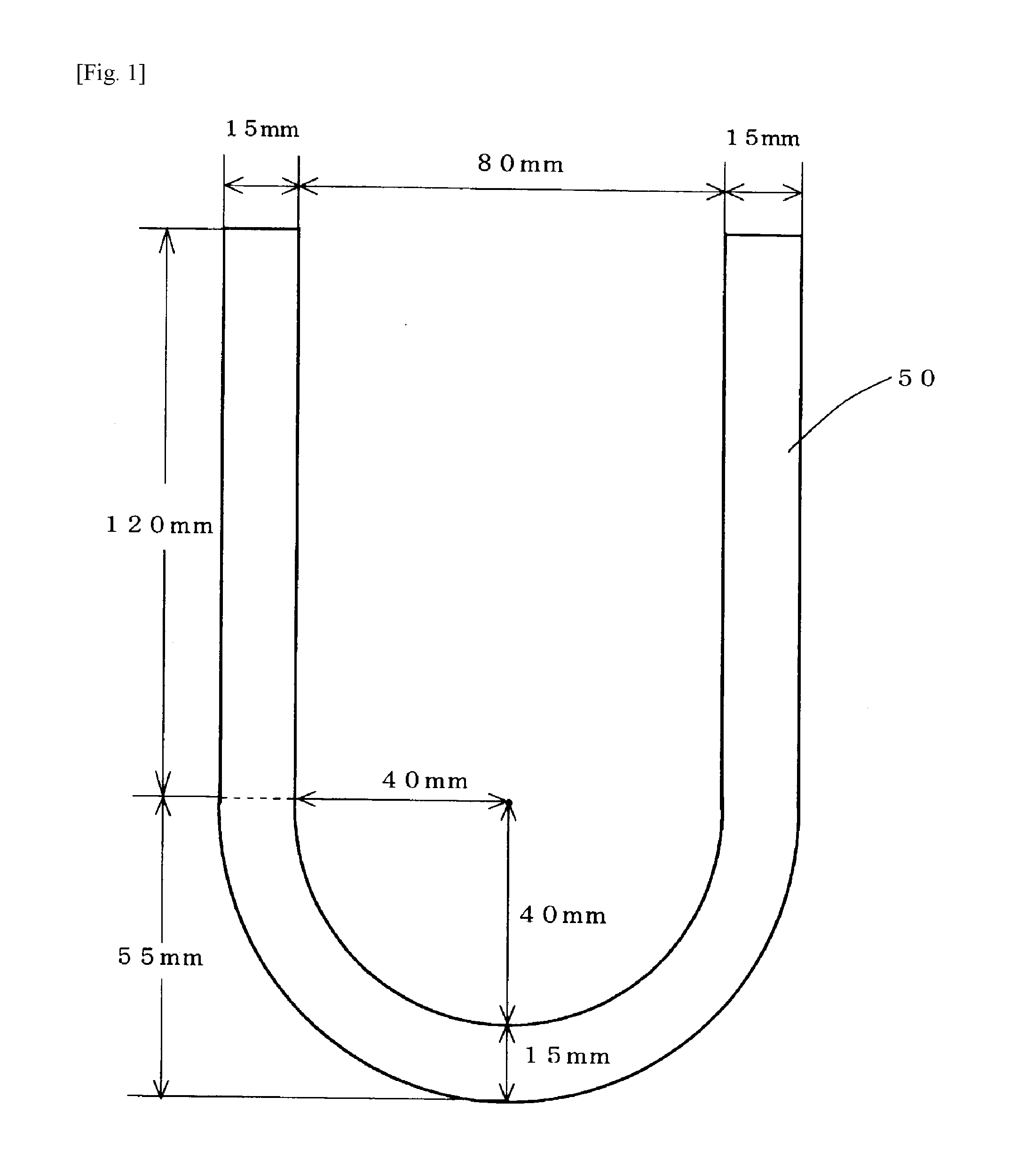Flame-retardant sealing material
a sealing material and flame-retardant technology, applied in the direction of chemistry apparatus and processes, other chemical processes, etc., can solve the problems of not having a good cell state, not having a good cut-off property, and sometimes foaming failure, etc., to improve the water cut-off property, improve the viscosity of the polyurethane raw material, and reduce the permeability
- Summary
- Abstract
- Description
- Claims
- Application Information
AI Technical Summary
Benefits of technology
Problems solved by technology
Method used
Image
Examples
examples
[0061]The results of the evaluation tests using the Examples of the invention and the Comparative Examples are shown below, and the invention is explained in further detail. In this regard, however, the invention is not limited to these Examples.
examples 1-1 to 1-20
and Comparative Examples 1-1 to 1-11
[0062]Water-sealing materials containing the polyurethane foams of the Examples and the Comparative Examples were prepared using polyurethane raw materials with the compositions shown in Table 1-1 and Table 1-2. The components in Table 1-1 and Table 1-2 are as follows. In Table 1-1 and Table 1-2, the foaming property is A when a good foam was obtained, and the foaming property is B when the foam was poor or could not be obtained.
[0063]Polyol A1: hydroxyl-terminated prepolymer synthesized by reacting a mixture of polyol A2 below / the isocyanate below=2 mol / 1 mol in the presence of a metal catalyst at 80° C. for about two hours, hydroxyl value of 33 mgKOH / g, viscosity of 17000 mPa·s (30° C.)
[0064]Polyol A2: polyether polyol, molecular weight of 3000, number of functional groups of 3, hydroxyl value of 56 mgKOH / g, product name GP-3000, manufactured by Sanyo Chemical Industries, Ltd.
[0065]Polyol A3: polyester polyol, molecular weight of 2000, number of...
examples 2-1 to 2-17
and Comparative Examples 2-1 to 2-19
[0098]Flame-retardant sealing materials containing the polyurethane foams of the Examples and the Comparative Examples were prepared using polyurethane raw materials with the compositions shown in Table 2-1 and Table 2-2. The components in Table 2-1 and Table 2-2 are as follows. In Table 2-1 and Table 2-2, the foaming property is A when a good foam was obtained, and the foaming property is B when the foam was poor or could not be obtained.
[0099]As polyols A1 and A2, water repellents C1 to C6, foaming agent D, foam stabilizer E, catalyst F2 and the isocyanate, those that were used in Examples 1-1 to 1-20 and Comparative Examples 1-1 to 1-11 described above were used.
[0100]Catalyst F2-1: reactive tertiary amine, product name Kaolizer No. 81, manufactured by Kao Corporation
[0101]Flame retardant G2-1: tris(1,3-dichloro-2-propyl) phosphate, Mw=431, product name WR-30-LV, manufactured by Albemarle Japan Corporation
[0102]Flame retardant G2-2: isopropylat...
PUM
| Property | Measurement | Unit |
|---|---|---|
| density | aaaaa | aaaaa |
| mean particle size | aaaaa | aaaaa |
| mean particle size | aaaaa | aaaaa |
Abstract
Description
Claims
Application Information
 Login to View More
Login to View More - R&D
- Intellectual Property
- Life Sciences
- Materials
- Tech Scout
- Unparalleled Data Quality
- Higher Quality Content
- 60% Fewer Hallucinations
Browse by: Latest US Patents, China's latest patents, Technical Efficacy Thesaurus, Application Domain, Technology Topic, Popular Technical Reports.
© 2025 PatSnap. All rights reserved.Legal|Privacy policy|Modern Slavery Act Transparency Statement|Sitemap|About US| Contact US: help@patsnap.com


